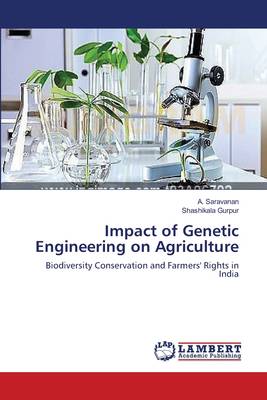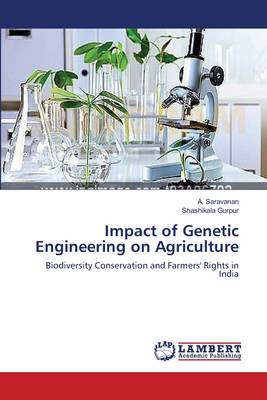
- Afhalen na 1 uur in een winkel met voorraad
- Gratis thuislevering in België vanaf € 30
- Ruim aanbod met 7 miljoen producten
- Afhalen na 1 uur in een winkel met voorraad
- Gratis thuislevering in België vanaf € 30
- Ruim aanbod met 7 miljoen producten
Zoeken
Impact of Genetic Engineering on Agriculture
Biodiversity Conservation and Farmers' Rights in India
A Saravanan, Shashikala Gurpur
Paperback | Engels
€ 61,45
+ 122 punten
Omschrijving
Agricultural Biotechnology is a branch of Biotechnology which is a collection of scientific techniques used to improve and increase the yield of plants in agriculture. There are various techniques in this technology though Genetic Engineering is the most prominent amongst them, India is also one of the frontiers in this technology. On the one hand Genetic Engineering helps in solving the global food crisis and makes a positive impact on world hunger and on the other side it is hazardous to Environment and Plant Biodiversity. With this prospect the research work achieves to understand the benefits and consequences of Genetic Engineering with its regulatory mechanism in India. Further it aims to conserve Biodiversity and keep land sustainable for future generation. There are numerous complaints about irregularities in the current regulatory mechanism i.e. Genetically Engineering Appraisal Committee (GEAC) as well as severe opposition to the proposed regulatory mechanism under Biotechnology Regulatory Authority of India (BRAI) Bill, 2013. Keeping this in mind this current work gives recommendations and suggestions for foreseeable possibilities for Indian agriculture.
Specificaties
Betrokkenen
- Auteur(s):
- Uitgeverij:
Inhoud
- Aantal bladzijden:
- 136
- Taal:
- Engels
Eigenschappen
- Productcode (EAN):
- 9783659445682
- Verschijningsdatum:
- 27/11/2013
- Uitvoering:
- Paperback
- Formaat:
- Trade paperback (VS)
- Afmetingen:
- 152 mm x 229 mm
- Gewicht:
- 208 g

Alleen bij Standaard Boekhandel
+ 122 punten op je klantenkaart van Standaard Boekhandel
Beoordelingen
We publiceren alleen reviews die voldoen aan de voorwaarden voor reviews. Bekijk onze voorwaarden voor reviews.











